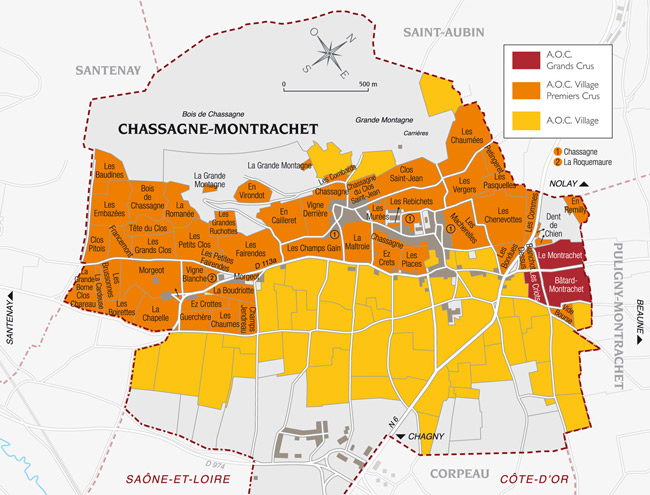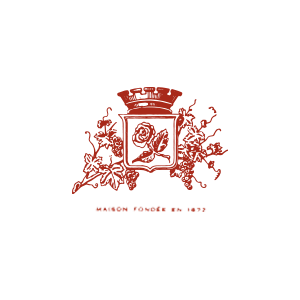Chassagne-Montrachet Premier Cru red 2018 "Abbey of Morgeot"
- Red
- 75 cl
Chassagne Montrachet 1er Cru Abbaye de Morgeot red 2018, from the Fleurot Larose estate (Château du Passe-Temps)
Chassagne Montrachet 1er Cru Abbaye de Morgeot red 2018, from the Fleurot Larose estate (Château du Passe-Temps)
Chassagne-Montrachet Premier Cru red 2018 "Abbey of Morgeot"
Complex
Powerful
Mineral
Fruity
Woody
Coming from one of the most beautiful plots of Premiers Crus of Chassagne Montrachet, "Abbaye de Morgeot" is here in its most beautiful expression: it has been harvested, vinified and aged with elegance and precision by Nicolas Fleurot.
It is a round, fatty, powerful and opulent wine, unctuous and of an aromatic complexity difficult to match! The pleasure is also prolonged thanks to a very nice length in the mouth.
The quality of the barrel ageing is particularly remarkable. It provides structure and empyreumatic aromas without denaturing the wine.
A wine to keep for up to 10 years.
White meats, veal in sauce. Fish such as salmon, but also lobster or lobster.
Map of the Chassagne-Montrachet appellation:

Full, round Burgundy red wine: pasta and risotto, grilled or roasted pork, roasted veal, sauce or pan-fried, Lamb, poultry, rabbit, roast beef, game birds, liver, kidneys in sauce, skewers, kebab, woks, camembert, brie
Appellation
Premier CruType of Wine
StillWine Making
Oak casksGrape Variety
Pinot NoirHarvest
ManualBurgundy Region
Côte de BeauneVintage
2018Service
14 to 16 degreesCustody potential
2028
White: this wine is the Chardonnay grape dressed in glittering gold! It boasts firm coloration with green highlights. Aromas of mayflower, acacia, and honeysuckle blend with verbena and hazelnut and in some cases toast or fresh butter. This wine boasts a profound minerality (flint). Age brings in notes of honey or ripe pear. Rounded and often opulent, its attack is instantaneous. On the palate, fleshiness is matched by mellowness, and both are equally persistent.
Red: brilliant, with purplish highlights – this wine is a well-coloured Pinot Noir. Aromas of Morello cherry and cherry-pit, wild strawberry, gooseberry, and raspberry are commonly present. Notes of animal and spice complete the bouquet. In the mouth, this wine has real substance. Its delicious fleshiness partly conceals tannins which, though somewhat austere in youth, give way with maturity to a concentrated and taste-filled structure, intriguing in its complexity.
White: its opulence and power make it an ideal partner for delicate fine white meats such as poultry or veal in sauce. Fish, either in well-spiced couscous or in Asian dishes such as curries or stir-fries, are also well-suited. Salmon, in itself highly aromatic, harmonizes particularly well. The Premiers Crus appellations will readily complement crawfish, lobster, or even foie gras.
Serving temperature: 12 to 14°C.
Red: powerful and tannic, it flatters good quality meats such as grilled or roast lamb, coating their fibres in the mouth. Its aromatic power balances that of grilled pork and of curried or tandoori-style poultry. The Premiers Crus demand, at the very least, feathered game.
Serving temperature: 14 to 16°C.
In the southern part of the Côte de Beaune Chassagne-Montrachet shares with Puligny the uncontested title of the prince of the world’s dry white wines: the divine Montrachet (pronounced “Monrachay”). This fine, broad hillside brings out the very highest expression of the two Burgundian grapes - the Pinot Noir and the Chardonnay, which grow here side-by side - such is the complexity of the region’s soils! Extensive marble quarries, which form a kind of cliff face, were the source of the pink and beige flagstones which went into the building of the Trocadero in Paris and more recently the Louvre Pyramid. The Chassagne- Montrachet AOC dates from 1937. It includes some plots in the neighbouring village of Remigny which share the same soil conditions.
At altitudes between 220 and 325 metres, the succession of rocks from the top down is first rauracien then callovien and finally argovien. The soil of the various Climats (named plots with distinctive qualities) ranges from pebbly limestones, through marls, to sandy soils with a Jurassic basis.
Source : https://www.bourgogne-wines.com
Family estate founded in 1872, passed down from father to son for four generations in Santenay.
The FLEUROT family bought the Château du Passetemps in 1912.
This house has long belonged to the Duvault-Blochet family,
Its cellars once housed the wine of Romanée-Conti.
One of the most beautiful cellars in Burgundy.
The Château du Passe-Temps is built on 2 floors of 4 vaulted cellars of 1400 m².
